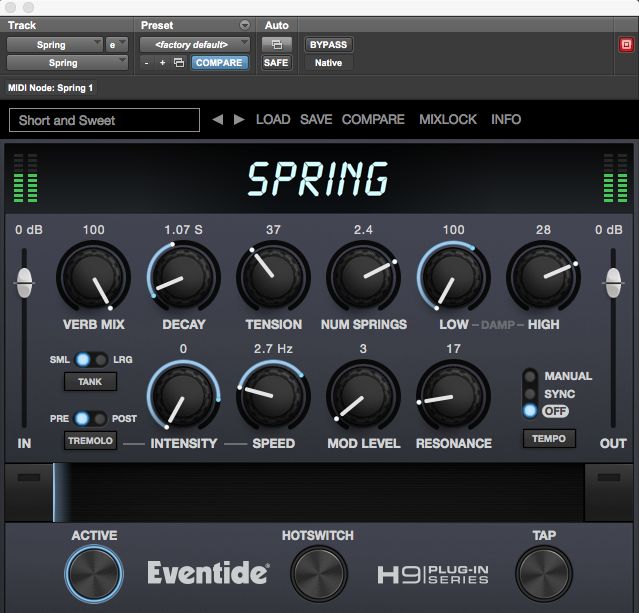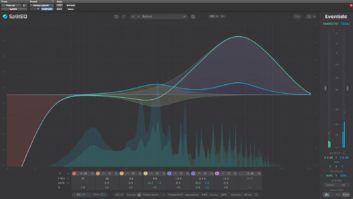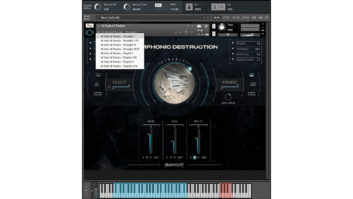
We all know that classic, distinctive sound of a great spring reverb found in the back of many guitar amps. Well, thanks to the Eventide Spring plug-in, we can now get that sound—and much more—inside our DAWs.
As a longtime user of the spring setting in Eventide’s Space pedal, I was thrilled to hear they were releasing a plug-in version of this algorithm. While it’s extremely simple to dial in a classic spring sound that would be perfect for surf or country guitar licks, what makes this plug-in really interesting is that Eventide has given us controls that allow us to push the boundaries of what a spring reverb can do, to achieve sounds that would never be possible with a real spring tank.
Eventide Crystals Effect Plug-In Debuts
Eventide Spring offers a wide range of decay times, from 0 seconds all the way up to 20 seconds. Using a short decay time (between 0 and 1.5 seconds), we were able to get something similar to an extra diffuse slapback delay, giving our guitar tracks extra thickness and a touch of depth without clouding up the already dense mix. Dialing the decay time up a bit, between 2 and 8 or so seconds, results in a more typical reverb sound, perfect for adding a sense of space to drums, vocals and more. Pushing the decay even farther, even as high as 15 or 20 seconds, was perfect for creating rich, ambient textures on pads and synths.
The next two knobs, Tension and Num Springs, work in conjunction to offer a huge range of unique tones. With the Tension knob all the way down at 0, it creates a metallic, resonant, almost flanger-like sound. On the other extreme, with the Tension set to 100, you can hear the distinct delay sounds of the springs vibrating back and forth. The Num Springs knob allows you to dial in how many actual springs are in the reverb. When set to 1, it has that super distinctive “boingy” sound that many springs are known for. As you dial the knob up and closer towards the max setting of 3 springs, the sound becomes increasingly lush and diffuse. From there, you can further shape the tone of the reverb with the damping section. Here, you have separate control over how quickly the high and low frequencies are absorbed, as well as a Resonance control which allows you to dial in some metallic resonance in the high frequencies.
Eventide decided to take this plug-in one step further by adding the perfect companion to a spring reverb: a tube-style tremolo. Featuring just two knobs, Intensity and Speed, plus an option for tempo sync, it’s incredibly fast and easy to dial-in the perfect tremolo sound. The tremolo section also features an option to have the tremolo pre or post reverb, giving you even more creative control.
As with all of Eventide H9 series plug-ins, Spring has the incredibly useful ribbon controller, allowing you to easily automate multiple plug-in parameters at once. Whether you’re looking for that classic tube amp spring sound or something totally new and unique, Eventide’s Spring will get you there.
Eventide • www.eventide.com







